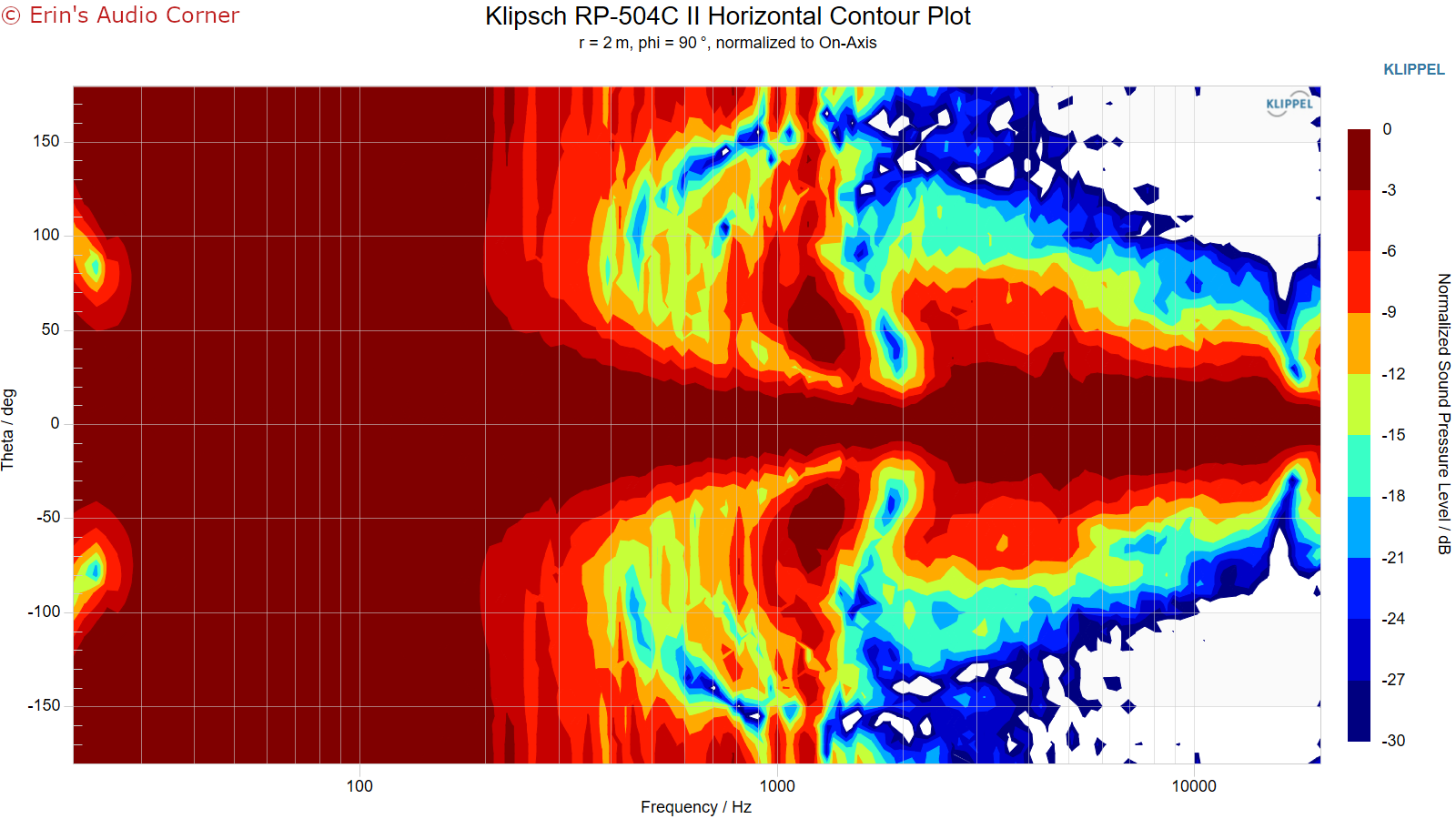One needs to send signals to two speakers simultaneously to even create a phantom speaker. Most YouTube speakers tests only send monophonic signals to one speaker at a time. So what you're suggesting is not as easy as it seems. Do you have a link to a YouTube video that can send stereo test signals?
To the OP:
A phantom image is a perceptual phenomenon based on psycho-acoustic principals for detecting directionality of sounds, (sound localization), such as:
- The Head Related Transfer Function, (HRTF): https://en.wikipedia.org/wiki/Head-related_transfer_function
- The Precedence Effect: https://en.wikipedia.org/wiki/Precedence_effect
- The Interaural Time Difference, (IDT), and Interaural Level Difference, (ILD): https://en.wikipedia.org/wiki/Sound_localization
- Physiologic and anatomical structures, such as head size, ear canal spacing, the structural anatomy of the pinna, and reflections from the head, neck and torso, these all influence influence human ability to determine sound directionality.
These criteria are used by the brain to determine the directionality of a single sound in 3D space. But when there are two identical sound sources, and conditions are "just right", the human brain can be fooled into
perceiving a sound as originating from a location where there is no sound source, i.e., a "phantom" image. While phantom imaging can indeed work quite well, it only works if specific criteria are met:
- The L/R speakers must be equidistant from the listening position so that the arrival times and levels of the 2 sounds are the same. Processing may be used to affect both arrival times, (Distance Setting), and arrival levels, (Speaker Trim Settings) to compensate for non-equidistant speaker placements, but they need enough granularity to be accurate. 1 foot granularity of Distance settings is not enough, nor is 1 dB granularity of level trims.
- The frequency response of both speakers at the listening position should be as identical as possible. While the two speakers are likely identical, their in-room placements could be very dissimilar. For example, if the left speaker is in a corner but the right speaker is near an opening with only the wall behind it for reinforcement, the two speakers could have wildly different FR's when the sound arrives at the ears. If that's the case, the phantom image will be impaired.
- There is also an inherent notch filter around 2 kHz in a phantom image that will change the apparent timbre of the phantom vs direct sound:
The bottom trace trace shows a 5 dB notch at about 2 kHz for the phantom center image vs a real speaker at the center position. 5 dB is a noticeable difference so that 5 dB notch will likely be audible.
- But the single most important issue with a phantom CC is the fact that it only works from the one unique listening position where the Levels, Distances and FR's are all identical. i.e., the "sweet spot".
Sitting outside the sweet spot will cause the phantom image to collapse to the speaker on the closer side. IOW, when sitting off-axis while using a phantom CC in a non-optimized audio system, dialogue and all other center-oriented sounds will be perceived as coming form the speaker on the side the listener is seated.
Using a real CC eliminates the collapse of the phantom image for those listeners outside the sweet spot. It anchors dialogue and other CC-specific sounds to the middle of the sound stage. If one is designing a system, and one cares about the sound perceived by listeners outside the sweet spot, a real CC speaker is the more optimal approach.
That said, there are certainly design compromises in many CC speakers, particularly horizontal CC speakers. Inter-driver interference response results in uneven off-axis frequency response, horizontal axis comb filtering and lobing. These are well-documented phenomena in horizontally aligned driver systems.
For reference, here is a speaker with excellent horizontal dispersion through the entire audible bandwidth:
This speaker has wide dispersion with no constructive/destructive interference, comb filtering or lobing out to at least 35 to 40 degrees across the entire audible bandwidth. IOW, if one sits anywhere within a 35 to 40 degree angle of this speaker, they will hear virtually the same response as if they were sitting directly on-axis.
OTOH, here is a a speaker with horizontally deployed woofers and a central tweeter, (an MTM design):
It has much more narrow dispersion, less than 20 degrees, through much of the midrange, meaning that, if you sit more than 20 degrees off-axis of this speaker, the sound will be quite different than if you sit within the 20 degree "sweet spot". Also note the "lobes" of sound further off axis through the midrange. These will become the reflected sounds off the walls, which will negatively impact sound quality.
Some claim they can't "hear" these phenomena, and therefore they are inconsequential, while others report that they can easily hear these effects. I suspect these differences can be related to the amount of constructive/destructive interference, comb filtering and lobing present, as well the amount of reflected sound present, (reflected sound can sometimes "fill-in" the sound lost due to poor dispersion, making it less audible). However, the other important factor is the pre-existing biases of the listener. With the above Klipsch speaker, anyone sitting 25 to 30 degrees off-axis will be hearing midrange sounds that are 10 to 20 dB lower in volume than the sound on-axis. 10 dB lower is "half as loud' while 20 dB lower is 1/4 as loud. Anyone who can't perceive a halving to quartering of the sound level at midrange frequencies is either not paying attention, has defective hearing or is in denial due to their pre-existing agenda.
One thing a phantom CC can definitely do better than a real CC is to align the phantom image horizontally with the L/R speakers, especially in systems with a solid, flat panel display/television. The phantom image will always be at the same height as the L/R speakers, (assuming the L/R speakers are at the same height). A real CC is often placed below or above the TV taking it out of horizontal alignment with the L/R speakers. This can cause image shifts for sounds that pan through the CC position. A phantom CC will not have this problem. Dialogue will always be at the same height as the L/R speakers and sounds that pan through the front sound-stage will always stay consistent height-wise as they move.
Another thing a phantom CC can often do better than a real CC is timbre-match the L/R speakers. Since the L/R speakers *generate the sounds the brain uses to create the phantom image, the phantom image is, by definition "timbre-matched" to the L/R's. A real CC that is horizontal is not likely to have the same timbre, or sound quality as the vertically aligned L/R's, and some pole find that timbre-mismatch unacceptable, (while other couldn't care less.
Bottom line, using a horizontal CC is not always a good solution and not always "better" than phantom CC, even off-axis. Everything is a compromise, and the decision about which to use is often decided by which is "least worst". So what is the "best" system to use? Well, the one with the least compromises. In that case, the most ideal system uses 3 identical, vertically aligned speakers, placed at the same height, with their acoustic centers at ear height, and with the L/R speakers toe'd-in so they aim at the ears of the primary listener. This provides as identical a frequency response as possible for all 3 front speakers, with identical dispersion patterns, all aligned identically across the front sound-stage. Here is a system I did for a friend with exactly those parameters:
![Image]()
That is 3 identical JBL LSR 306 MKII's across the front, all perfectly aligned, aimed at the ears with tweeters at ear height. The TV may look like it's mounted a little too high, but my friend had recliners which tilted his head back, making the middle of the TV right in his direct line-of-sight. This was actually a 5.2 system with surrounds and 2 Monoprice subwoofers, but it could easily have been a 3.1 or 3.2 system with no surrounds. These speakers are relatively inexpensive at about $150 USD ea. on Amazon. And they measure exceptionally well for such an inexpensive speaker:
This is a review and detailed measurements of the JBL Professional 306P MKII powered speaker. It is on kind loan from a member and costs US $149 including Prime shipping from Amazon (each). Naturally the 306p has identical look and feel of the rest of the LSR series: Same as the back...

www.audiosciencereview.com
These speakers are self-powered with on-board amps, so you don't need a high powered receiver... any 5-channel receiver with pre-amp outputs will work. And the synergy between the amps and the drivers means they'll play quite loud being specified at 110 dB max peak SPL, 92 dB continuous.
They also have wide, even dispersion with no constructive/destructive interference, comb filtering or lobing:
There is some narrowing between 1 kHz and 1.1 kHz, which might be somewhat audible off-axis, but nothing like a horizontal MTM speaker. If you're looking for a relatively inexpensive system that hits all the design goals for a front sound-stage, something like these speakers could fit the bill. There are other small bookshelf speakers. both powered and passive that could also work.
Good luck!
Craig










